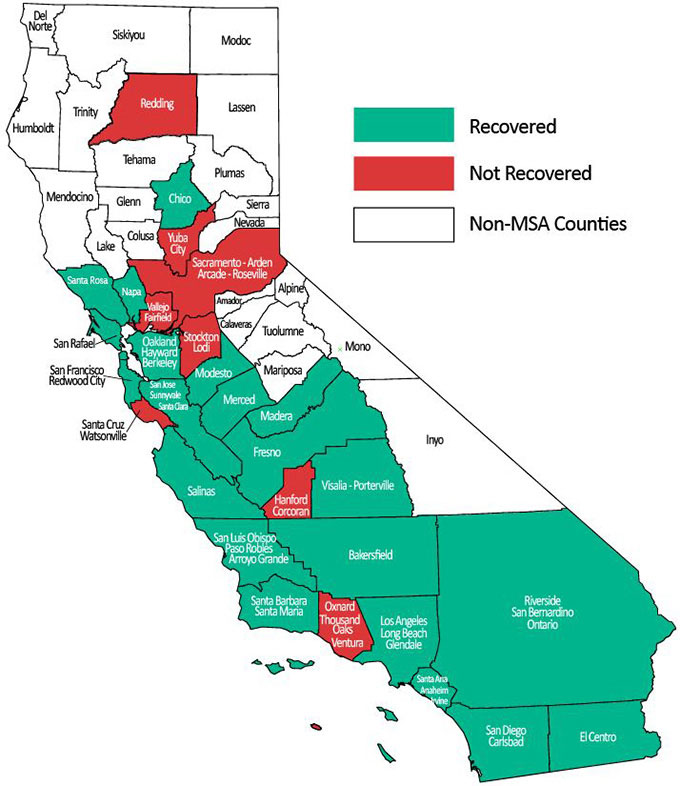
Vol. 1, No. 6, Published October 1, 2015
California Job Tracker: Labor Market Improves, But Stockton-Lodi Region Falls From Recovery Group
By Lynn Reaser

California�s labor market continues to improve, with further job gains and falling unemployment. August saw the State�s jobless rate fall to 6.1 percent, the lowest level since January 2008.
Twenty-one out of California’s 29 California�s metropolitan areas have fully recovered all of the jobs lost during the Recession and exceeded their prior peaks reached before the Recession.
The Stockton-Lodi area recorded a small job loss in August and fell out of the recovery group, but it should again exceed its prior employment high within the next one to two months.
Non-farm employment in California as a whole is now 735,000 jobs, or nearly 5 percent, above the prior peak reached in July 2007.
Figure 16: 21 of California�s 29 Metro Areas Have Recovered Recession Job Losses (As of August 2015)

Sources: California Employment Development Department, Labor Market Information; Fermanian Business and Economic Institute
Figure 21: Job Recovery by the Numbers (As of August 2015)
(Nonfarm Employment, Seasonally Adjusted)

*Numbers for the San Francisco-Redwood City-South San Francisco Metropolitan District and San Rafael Metropolitan District are not seasonally adjusted.
Sources: U.S. Bureau of Labor Statistics, California Employment Development Department, Fermanian Business and Economic Institute
See raw data: Employment numbers by region.
Lynn Reaser is chief of the Treasurer’s Council of Economic Advisors and chief economist at the Fermanian Business and Economic Institute for Point Loma Nazarene University. The opinions in this article are presented in the spirit of spurring discussion and reflect those of the author and not necessarily the Treasurer, his office or the State of California.